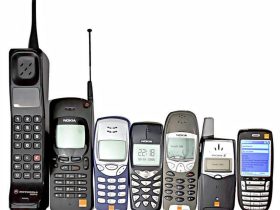In this article, we’ll explore the future of 5G and how it will impact our lives. It’ll help us improve autonomous vehicles, the House Web, cellular innovations, and much more. As a result, the future of 5G is bright. Ultimately, we’ll see it become a mainstream technology. Until then, we’ll have to wait a little longer to see what it has to offer.
EMBB
eMBB, or enhanced mobile broadband, is an important component of the transition to 5G and the Internet of Things. With the advent of EMBB and the availability of new spectrum bands, 5G cellular networks are undergoing rapid change. However, there are still many challenges ahead, which can make it difficult to deploy eMBB at a fast rate. Among the challenges are the increased data rate, new antennas, and battery life. Fortunately, there are a few steps to help device manufacturers and network operators plan for this new standard.
One way to bring 5G to the masses is by using fixed wireless access, which is a type of mobile broadband that enables a user to connect from any location. Its higher-frequency bands can support high-definition video streaming and downloading. Moreover, fixed wireless access can boost indoor coverage in high-rise buildings, as well as outdoor coverage in crowded city centers. Several operators have already launched 5G services using fixed wireless access, and more than 30 network operators are leveraging this technology.
IoT
The introduction of 5G technology has been hyped as a breakthrough in the industrial IoT sector. But the technology’s real promise is much wider. The proponents of 5G say it will change the way we live, work, and play. They point to its potential to revolutionize mobility. The key stakeholders behind the technology’s advancement are manufacturers and associations working to accelerate Industry 4.0 and industrial transformation.
IoT sensors powered by 5G technology can monitor inventory and critical patient data. These sensors can help healthcare providers manage inventory and track crash carts and medical supplies. They can even send alerts to doctors or managers in case something goes wrong. Additionally, 5G technology can enable secure access to online resources, which will reduce costs and increase production. In fact, it’s not just the hardware and software that will benefit the healthcare industry, but also the infrastructure of cities as a whole.
Security cameras
The latest technology in security cameras is based on the latest mobile technology, 5G. It will soon be available on smartphones, including the Samsung Galaxy S9/9+ and the Galaxy Note8. 5G devices will be available in areas where 4G LTE is not yet available. In the meantime, carriers are preparing a 4G LTE network for use in these areas. 5G security cameras will be able to download high-resolution video footage in seconds and upload it to the Cloud. They will also use 5G’s speed, a thousand times faster than a 4G network.
The introduction of 5G technology will bring a revolution in video surveillance applications. Currently, only 2% of surveillance cameras utilize cellular connectivity, which makes them inefficient for capturing video footage. 4G networks have not been able to deliver the speed needed to transmit video efficiently, causing the network to slow down after several cameras. The next-generation network will enable thousands of cameras to be connected at once and can stream video footage at blazing speeds over large areas. With this new capability, machine learning and analytics will become easier and faster than ever.
AR/VR
When 5G becomes mainstream, a major advantage will be that it will make it easier to stream high-end interactive graphics from the cloud to a VR headset. The benefit of this is that the user won’t have to own a powerful PC or a high-end gaming console to enjoy VR content. A high-end PC would have to have huge RAM and handle rapid back-and-forth data transfers. VR headsets split these tasks between the headset and PC.
While the US still generates the majority of revenue from VR/AR today, the long-term economics could favour its Asian neighbors. Chinese firms such as Alibaba and Tencent have already made huge investments in this technology. In the next 5 years, Asia may be accounting for half of the global market. But the success of the platforms depends on the deployment of first generation 5G networks. If deployment of 5G is slow, American firms could be at a disadvantage.
Military applications
As mobile networks become increasingly ubiquitous, military planners have begun to investigate new ways to improve communications and collaboration in their battlespaces. 5G networks offer many advantages, including remote connectivity, reduced latency and energy efficiency, and increased bandwidths. In addition to improving situational awareness, 5G will improve information sharing between combat groups, as well as provide high-speed data transfer and secure video sharing. For example, the German Army has successfully tested 5G in an area where it operates a surface action group.
Beyond enabling real-time communications, 5G technology could help the military develop hypersonic weapons guidance systems. These weapons will travel at speeds of up to 15-20 times the speed of sound. Current generation networks are not designed to handle this kind of power, but 5G technology could be used to provide real-time connectivity and detection of these weapons. That could make a huge difference in the battlefield. While many benefits are expected from 5G, there are several barriers that must be overcome before the technology can be fully deployed.
Those are the future of 5G that we can share to you. By knowing the future of 5G, we hope that we can get a lot of advantage from it.








Leave a Reply